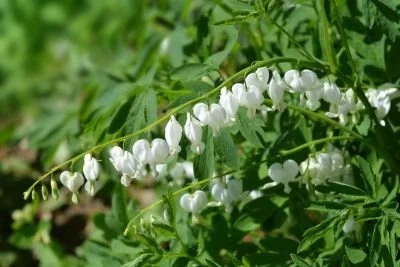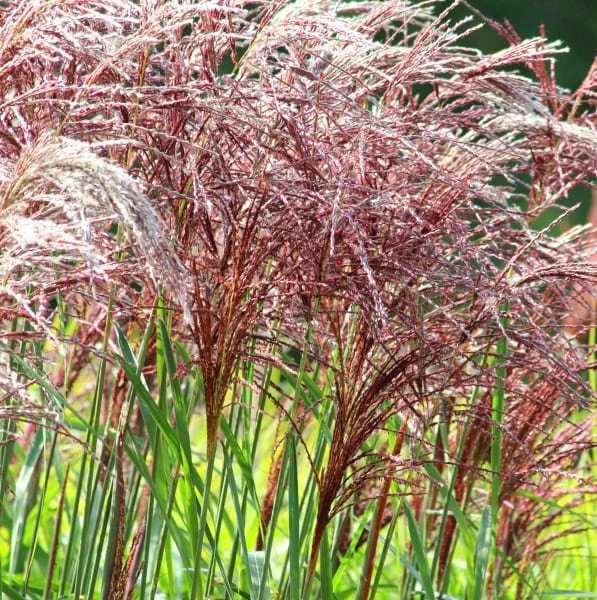Fantastic Ferns
Too often overlooked, ferns can bring fantastic drama to a garden – from ferns with eye-catching wavy edges to those flushed with tones of silver and burgundy.
They bring structure, grow well in areas that other plants can find challenging, and evergreen species provide interest all year round.
How to grow ferns
There are a huge range of ferns, varying in height, colour and habitat.
Some ferns love shade and others prefer sun. Some are compact, tight specimens while others spread widely. While some die back in autumn others are evergreen. Some deciduous ferns turn appealing colours in the autumn, with many having amber, brown or black scales all year round. All are easy to grow and require very little maintenance.
They are best planted in spring or autumn in humus-rich, well drained but moist soil (most prefer alkaline or neutral but a few prefer acidic soil). Leaf mould added to the planting hole is better than rich manure and compost which can be too rich for them.
Maintaining the appearance of ferns is easy! For evergreen ferns, remove any damaged or dead fronds; cut back deciduous species in autumn.
Ferns for the right spot
The Stumpery at RHS Rosemoor
Sunny areas – Dryopteris affinis or Osmunda regalis
Shady spots – Dryopteris filix-mas or Polystichum rigens
Sheltered positions – tree ferns (perennial ferns with woody trunks). The most popular choice of tree fern in the UK is Dicksonia antarctica. They will thrive in a sheltered, humid and shaded position which mimics their native habitat. They are extremely slow growing, so it is worth investing in a large specimen to create impact in your garden. However, small potted specimens with small trunks can be used effectively as low growing understory planting. They need protection from cold in winter.
For best results, when planting them we fix micro irrigation to the top of the trunk to slowly drip water where the new fronds are unravelling. Selecting the right fern is key- bending and forked trunks are often more characterful specimens. You can plant these at an angle- leaning into the light or straight. These plants require a large area to grow in as the fronds can be over 2m in length. They are bought into the UK just as trunks that are then potted on. Due to this, their root system will be poorly developed and they need stakes to support them if they are large. Ensure that specimens are coming from a reputable supplier who deals in the sustainable harvest and trade of tree ferns.Bog garden – Matteuccia struthiopteris or Osmunda regalis. A brilliant garden to visit and admire these moisture loving ferns is Longstock Park Water Garden on the Leckford Estate in Hampshire.
Acid soil – Blechnum species
Dry soil – Asplenium scolopendrium or Dryopteris affinis. At Alaster Anderson we like to incorporate ferns into our window box and pot schemes; we sometimes use small Dryopteris affinis or Dryopteris atrata in these planting schemes.
FIVE OF OUR FAVOURITE FERNS
These glorious ferns are a delight because each surprises in a different way:
Adiantum venustum: evergreen Himalayan maidenhair fern that thrives in shade or dappled shade. Delicate light-green fronds darken with age.
Asplenium scolopendrium : eye-catching evergreen rosettes of glossy fronds
Matteuccia struthiopteris: the shuttlecock or ostrich fern sends up bright green 'shuttlecocks' in early spring. It matures into a splendid plant.
Dyropteris wallichiana: A semi-evergreen which thrives in shade. It has a distinctive hairy, brown rib through the centre of the leaf with impressive upright foliage when first emerging in spring.
Polystichum polyblepharum: a semi-evergreen fern which is a great all-rounder. It has pretty, soft foliage on rigid fronds so holds its shape well. It can work very well container planting schemes.
The Enchanted Rain Garden
At the Chelsea Flower Show last year the Alaster Anderson team was much taken with The Enchanted Rain Garden, lush with ferns and inspired by the wet weather in Manchester.
Its waxy deep-green planting glistened when wet, while the ferns held raindrops softly between their leaves.
The garden also had an overarching message about climate change. As the Royal Horticultural Society said: “The overall narrative and design of this garden evoke the spirit of the UK’s northern cities, harnessing the magic of a rainy environment while talking to the growing regularity of stormy weather we face as a result of climate change.”
If we can help you with your garden then please get in touch. You can reach us on 0207 305 7183 or email at enquire@alasteranderson.com






